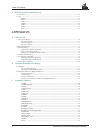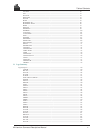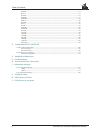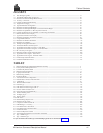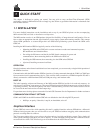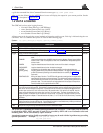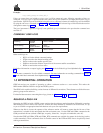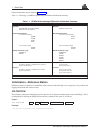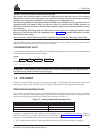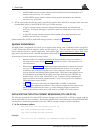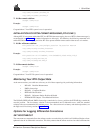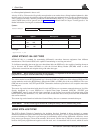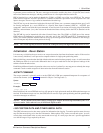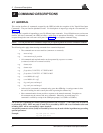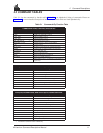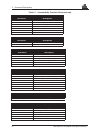
1 Quick Start
MiLLennium Command Descriptions Manual 5
NOTES: Entry of the station ID and health are optional
The accuracy of the reference station’s
FIX POSITION setting will directly affect the accuracy of its computed
differential corrections. Good results at the rover station are dependent on the reference station’s combined
position errors being kept to a minimum (e.g., fix position error + multipath errors).
The GPSCard performs all computations based on WGS84 and is defaulted as such, regardless of
DATUM
command setting. The datum in which you choose to operate is converted from WGS84; therefore, all
differential corrections are based on WGS84. Ensure that any change in your operating datum is set prior
to
FIX POSITION.
When transmitting RTCM type data, the GPSCard has various options for assigning the number of data
bits per byte. Please see the GPSCard command
RTCMRULE, Appendix C for further information concerning
RTCM data bit rule settings.
The FIX POSITION “health” field entered will be reported in word 2 of the RTCM message frame header.
Once the GPSCard has its position data fixed and is tracking three or more satellites, it is now ready to transmit
differential correction and observation data to the rover stations.
LOG BROADCAST DATA
Assuming that a data link has been established, use the GPSCard log command to send observation and differential
corrections data for broadcast to the rover stations.
Syntax:
Example:
log com1 rtcm ontime 5
REMINDER: Ensure that the bit rate of the data link is suitable for the differential type, logging rate and
maximum message length of the data type being logged.
1.4 RTK MODE
Currently, NovAtel’s RTK system uses proprietary messaging. Consequently, both the reference station and
remote station must use NovAtel GPS receivers in order for the system to work and perform as described.
Data Communications Link
It is the user’s responsibility to provide a data communications link between the reference station and remote
station. The data transfer rate must be high enough to ensure that sufficient reference station messages reach the
remote station to keep extrapolation errors from growing too large; see Table 1-2.
Table 1-2 Latency-Induced Extrapolation Error
Generally, a communications link capable of data throughput at a rate of 4800 bits per second or higher is
sufficient. However, it is possible to satisfactorily use a lower rate; see Chapter 6, Message Formats for additional
information. The minimum data transfer rate is based on the following:
1. RT-2 requires that the reference station periodically transmit two RTCA Standard Type 7 messages:
LOG port data ontime seconds
Time since last reference station observation Typical extrapolation error (CEP)
0-2 seconds 1 cm/sec
2-7 seconds 2 cm/sec
7-30 seconds 5 cm/sec



